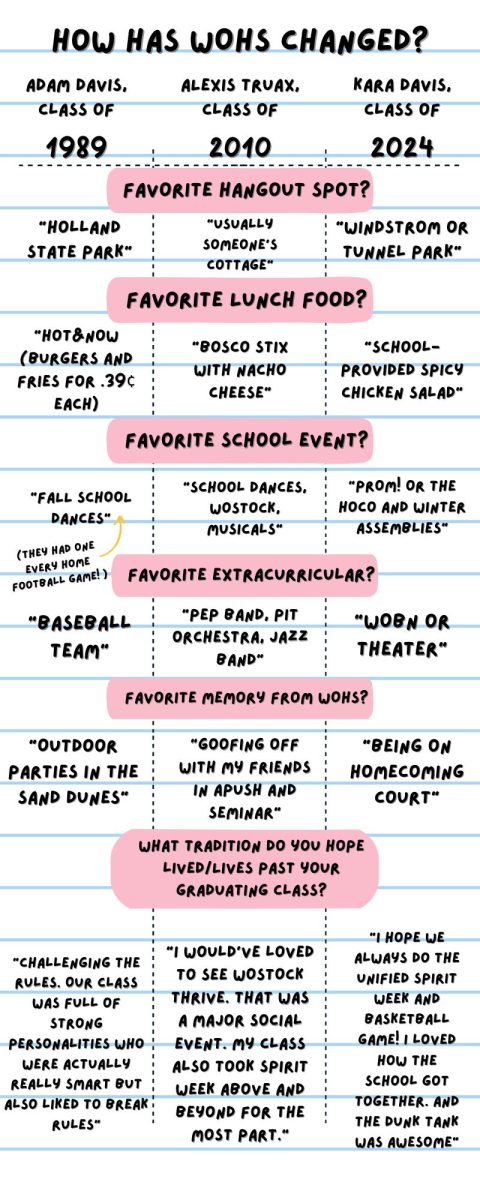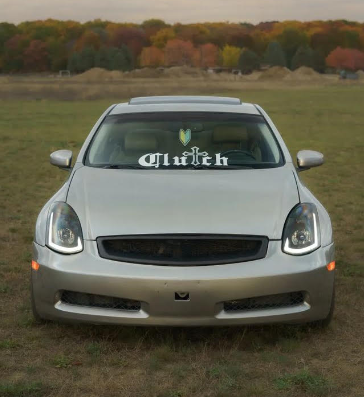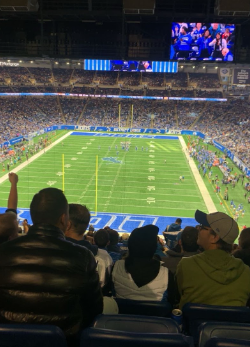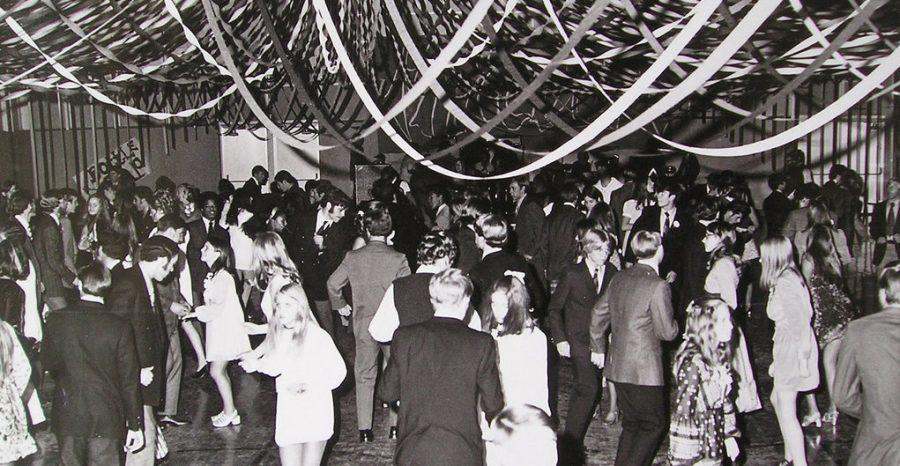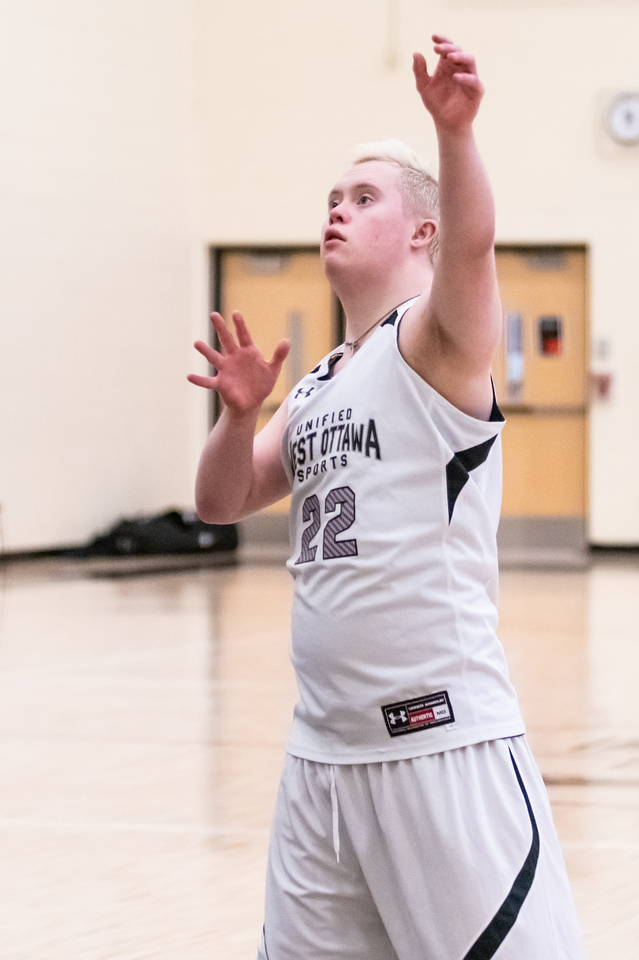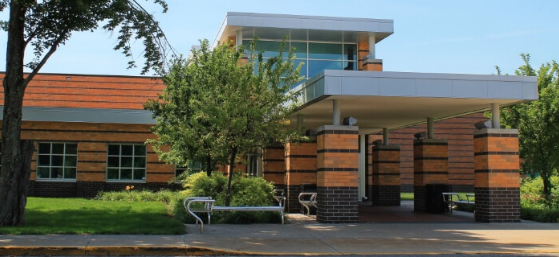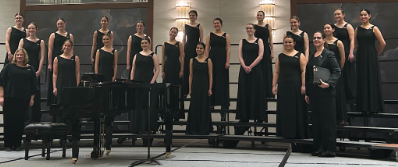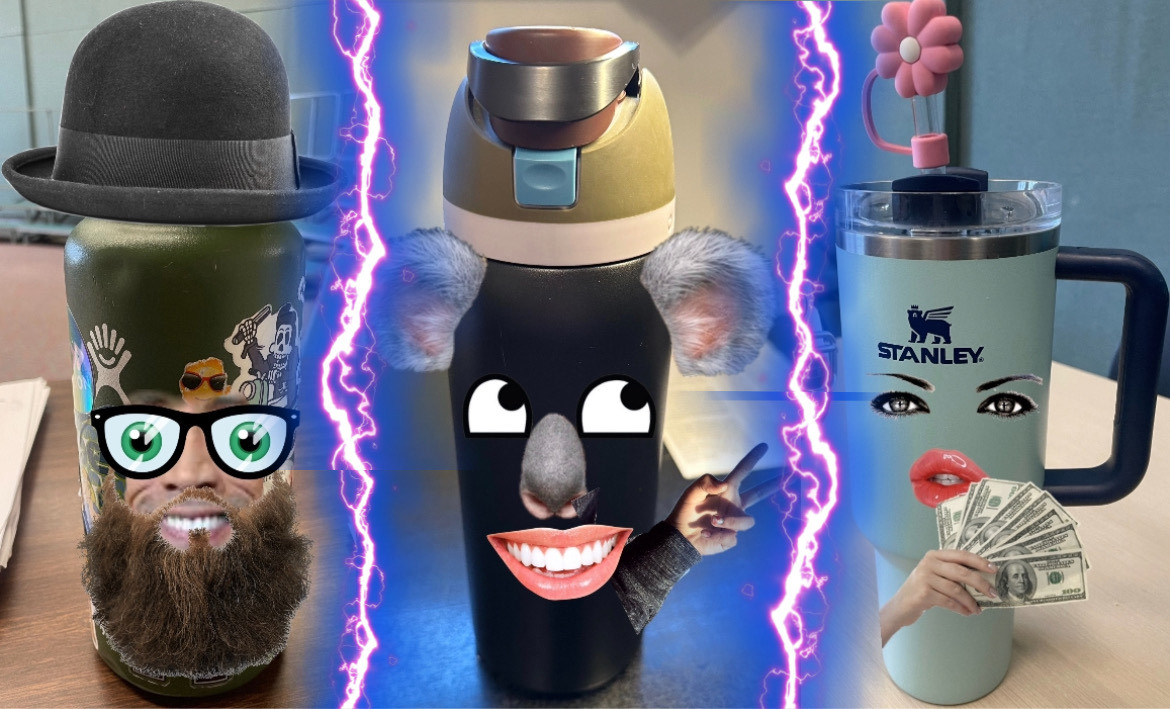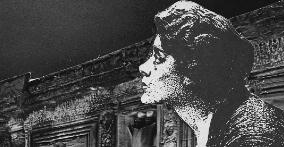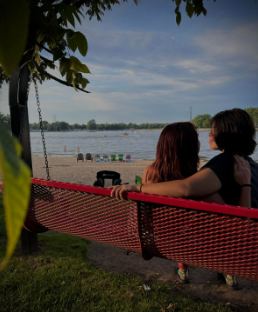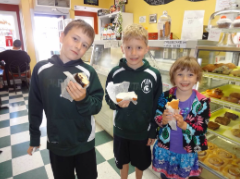“Do girls still sit on the side of the dance room and wait for a guy to ask them to dance?” asked Sr. Clara Klein’s grandmother. This innocent question brings about a very outdated tradition and reveals just how dramatically high school dances have evolved over the decades. The fashion, music, and dance moves at my homecoming dance are hardly comparable to high school dances of just a couple decades ago.
On the day of the dance, I spend about two hours getting ready—I carefully pick out earrings, pin back my hair, and paint my nails. As I am waiting to head over to my friend’s house, I flip through Snapchat stories, seeing my peers post their glittery eye makeup, curled hair, and polished outfits.
Around 5:00, I meet up with some friends to take group pictures and eat pasta for dinner before we all drive to the dance together.
The six of us walk in, show our $10 tickets and head toward the cafeteria, which had been transformed into a dance room. There are light up balloons hanging from the ceiling of the common area. Several round tables are scattered to the right, and string lights are wrapped around the brick columns lining the hallway. Lemonade and small cups of popcorn are handed out through the concession stand. Two photo booths are set up against the wall with a line of chatty students eagerly waiting their turn to take goofy pictures. About 1,250 students attend the event, creating a fun, crowded, and anonymous atmosphere. Most girls wear tight dresses and guys are usually found in suspenders and a bow tie.
Flashy colorful lights illuminate the otherwise dark dance floor. Students dance closely as pop and rap music blare from the speakers. I hang out with my group of friends the whole night, taking part in the “Cha-Cha Slide” and bopping to songs like “Apple Bottom Jeans” by Flo Rida and Cardi B’s “I Like It Like That.” We laugh at the fact that security guards are on a blue aerial lift near the back wall, overlooking the dance floor with flashlights. It is no lie that dirty dancing is an issue in this day and age; the center of the dance floor is littered with students grinding on each other.
As the party wraps up at 10:00, my friends and I get something to eat. We drive to Steak ‘n Shake, where we order milkshakes and fries and talk about the night.
My experience is typical of high school dances in 2018, but each generation has a unique idea of what it was like to dress up and dance with their peers. As the decades pass, school dances adopt completely different characteristics. The changes start out gradually and build overtime.
Ten years ago, when Brittney Delo-Martinez attended high school, the dance was not too different from today: “The dance was a big deal, we were always very excited.” Brittney remembers getting her hair and makeup professionally done and wearing loose, sparkly dresses. She would meet with friends before the dance, take group pictures, and head to a nice place for dinner, “like Pereddies or Boatwerks in Holland.” Brittney explains how “Girls would usually go with a male counterpart, instead of the big groups of girls that are more common today.” These couples would pile into a friend’s minivan and head to the high school together. The dance room was set up in the school’s cafeteria, usually decorated minimally and with string lights. When asked about the most popular songs, Brittney giggles, saying, “This is embarrassing… ‘Apple Bottom Jeans’ and ‘Get Low.’” Ironically, music taste has not aged too much in the past ten years. As for dance moves, Brittney recalls, “There were a lot of dance battles and still a lot of grinding, [laughs] but we didn’t know how to twerk yet—that wasn’t really a thing.” Once the dance was over, It was traditional for Brittney and her friends to end the night with a sleepover.
Alicia Barnaby’s high school experience was something straight out of That 70s Show. The year was 1978, when the disco era was in its peak. As the homecoming football game ended, Alicia headed to the dance with her date. Because the dance was directly after the game, people showed up in an array of outfits. “The court was dressed up; girls wore long dresses and had their makeup done, and some boys would wear suits,” explains Alicia. “Football players wore their jerseys, but everyone else just wore their coolest outfit.” The style was much more flamboyant—suits often had big collars and were in pastel colors while dresses were flowy and loose. For homecoming, though, girls did not usually go dress shopping or get their makeup done. Alicia remembers wearing jeans and a black satin shirt with, of course, blue eyeshadow. The dance was in her school gym, decorated with “crepe paper, balloons, and some homemade signs.” Fold-out chairs lined the gym walls and functioned not only as a place to rest and hang out, but as Alicia explains, “[Sitting in the chairs] signaled to people that you were available to dance with.” As the local band played “Stairway to Heaven,” everyone was out on the dance floor. “People danced… awkwardly,” Alicia laughs. The hustle was the most popular dance, but “most of the other dance moves were inspired by the show American Bandstand,” recalls Alicia. Dirty dancing was unheard of, “People were still pretty innocent,” she remarks. Typically, teens ended the night at a house party with some friends. Alicia remembers these dances as fairly “unsophisticated and basic.” But like any other generation, they had their unique fun.
In 1948, Bernice Kisliuk graduated high school. As she reminisces on the dances, she laughs, saying, “I wish I could dance now.” Dancing was a bigger part of the culture in her day: “After lunch, they sectioned off the cafeteria and we would dance… on any normal day.” Bernice belonged to a high school sorority which put on 3 dances each year. She explained how she would typically go with a date, or a double date, and meet her friends at the dance, “Many couples rode streetcars downtown unless you were lucky enough to have a friend—boyfriend—who drove or a father that had a car.” Couples usually did not go out to dinner before dances. Bernice mentions that she “didn’t go to the beauty parlor, or get nails done before dances, either.” Instead, girls used rollers to curl their hair. As Bernice looks at a photo from high school, she realizes that “Everybody had long, curly hair… not straight like they have it now.” As for dresses, they were always very elegant, long ball gowns in a dressy, satin material. “I can see it right now,” she whispers as she pictures her prom dress from 70 years ago. Bernice describes the venue as “magnificent, big ballrooms in nice hotels downtown.” Yet, she also experienced more typical dances in the “smelly” high school gym. Despite the venue, there was always impressive live music bands playing classic tunes from Lionel Hampton, Tommy Dorsey, Frank Sinatra, and Glenn Miller. It was “beautiful, soft, romantic music,” Bernice remarks, “We didn’t play our music loud.” The jitterbug and slow dance were most common in her day, “Nobody danced separately like they do now, we held onto each other.” Times were different; as Bernice describes it, “It was a calmer existence. They were good times… but every year has their fun.”
As society changes through the decades, so does high school culture. Not only fashion and music taste evolve, but the way teens interact with each other has changed. It’s interesting to realize that what current high schoolers know as a high school dance differs from dances ten years ago and will differ from those ten years from now.

